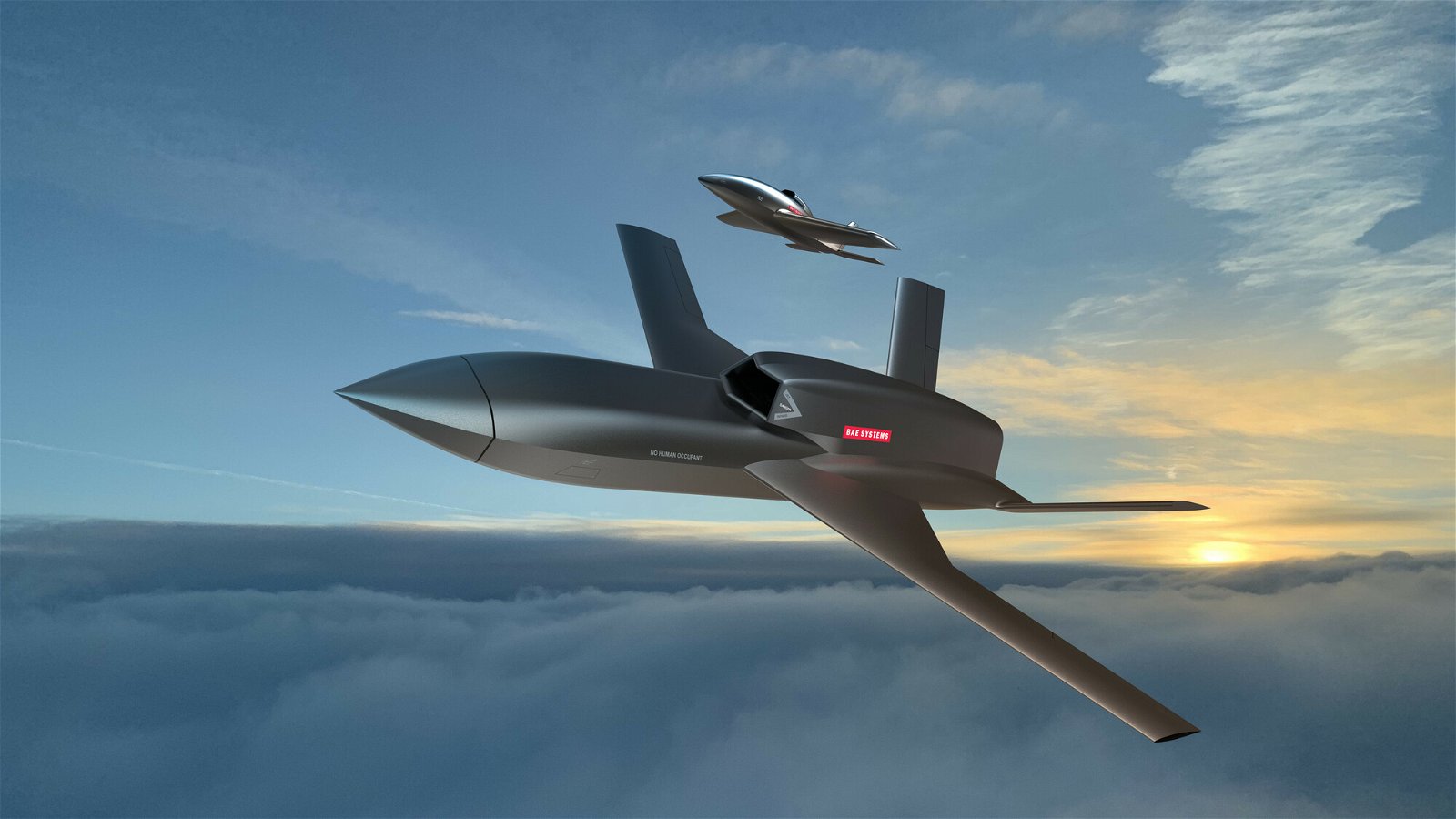UK defense contractor BAE Systems has announced the creation of FalconWorks, a center for advanced research and development of cutting-edge combat aviation technologies.
Much like the famed Lockheed Martin Skunk Works, which pioneered a number of firsts in military aviation technology throughout the 20th century, BAE Systems hopes that FalconWorks can take its place at the forefront of a 21st-century combat aviation technological revolution that includes autonomous flight, artificial intelligence, high-altitude aviation, and pretty much anything else their engineers can dream up.
Company Has a Long Track Record of Forward-Looking Aviation Successes
A July 10th press release announcing the formation of FalconWorks describes the endeavor as “a new centre for advanced and agile research and development designed to deliver a range of cutting-edge combat air capabilities to the UK and its allies.”
Since its establishment in 1999, BAE Systems has forged an impressive track record with the Typhoon and F-35 Lighting II aircraft while also developing the Tempest combat air demonstrator as a means to delivering the company’s first sixth-generation fighter. The company has also showcased advancements in high-altitude/long-duration flights with their PHASA-35 program, including a recent record-setting flight.
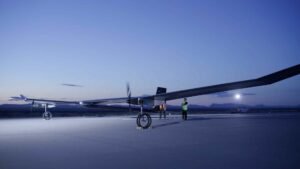

Now, it appears the futuristic, forward-looking approach of combining creative collaborations with industry leaders, academia, entrepreneurs, and field experts that made Skunk Works a household name for the last generation is a central motivating theme at FalconWorks, where BAE Systems says they are aiming to “deliver solutions with speed and efficiency, increasing the use of digital technologies such as artificial intelligence, quantum sensing, and robotics.”
“Defending our freedoms is becoming ever more unpredictable – the only constant is change,” said Dave Holmes, Managing Director of FalconWorks at BAE Systems. “The creation of FalconWorks is a reflection of the changing environment, and our goal to ensure innovative technology development is at the core of everything we do.”
Insider Offers an Early Peek Behind the FalconWorks Curtain
To better understand the total investment in money and personnel at FalconWorks, as well as the team’s overarching goals, The Debrief reached out to Matt Foster, the FalconWorks Business Development & Strategy Director.
“FalconWorks is a new line of business within BAE Systems’ Air sector and currently has over 1,000 people working across a number of our key sites,” Foster told The Debrief. “We’ve brought together over 50 organizations ranging from academia through to high-value manufacturing catapult networks, big blue chip organizations, and individual entrepreneurs.”
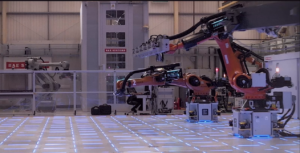

This means that at FalconWorks, a full-time team of over 1,000 BAE employees, as well as experts from their various partners and clients, will work together on projects involving high-altitude flight, autonomous aviation, cutting-edge materials, artificial intelligence, and a whole host of other forward-looking areas to remain at the forefront of combat aviation.
“All of these people have come together to showcase what they can do to create this environment,” Foster explains. “Now we are using this environment to build the next technology demonstrators, which will be flown to test and develop the technologies of tomorrow.”
The Creation of Air Labs
One of the first steps forward in the FalconWorks effort Foster described is the recent completion of a facility known as Air Labs. Essentially a virtual prototyping facility, Air Labs, is designed to allow engineers and customers to work together to quickly bring their vision of future combat technologies to fruition by combining artificial intelligence and virtual reality.
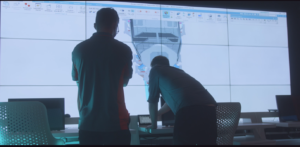

“Air Labs (is) a virtual environment that can bring together the latest developments in software and techniques, at scale, to showcase new capabilities to partners,” Foster told The Debrief. In short, if their customers can imagine it, BAE says they can use Air Labs to quickly and efficiently work from the idea stage to the prototype stage, all in their own facilities.
Foster also told The Debrief that along with Air Labs, the FalconWorks team will have access to the wide range of facilities that the company has to offer.
“FalconWorks will have access to a series of facilities that allow people to experiment at scale, whether that be in our factory of the future or our advanced laboratories, such as Air Labs,” he said. “These environments are set up to experiment and mimic industrial applications and, coupled with our long-established track record in research and development, will support our experts to not just work on concepting and early life cycles of products but also take that on to devising pre-production solutions.”
Working in the “Factory of the Future”
In both the video presentation announcing FalconWorks and the information available on the company’s website, a lot of focus is placed on the people and partners that will make up the team, along with the state-of-the-art equipment and facilities. This includes experts from existing customers and governments, as well as leading minds at smaller companies that work on individual systems and components of larger programs like Tempest.
This confluence of expertise and advanced tools, personnel, and equipment appears to be at the very heart of an effort whose main goals are bringing together top people and cutting-edge facilities with a unique combination of collaboration and autonomy that will result in unimaginable breakthroughs. It’s something BAE calls the Factory of the Future.
“The Factory of the Future was one of the first environments that we created with FalconWorks in mind,” Foster told The Debrief. “It’s a place where we can demonstrate and envisage what manufacturing will look like in the 2030s, 2040s, and 2050s.”
One of those cutting-edge tools is a virtual prototyping and design system BAE calls OdySSEy.
“An example would be our OdySSEy virtual training programme, where we’ve integrated small and medium enterprises with our customers to prove what can be achieved with virtual and mixed reality.”
Foster says that the key advantage to having this type of facility at FalconWorks’ disposal is that it allows the engineers to bring different parties and partners from academia and business into these digital environments “so that we can explore and trial new ways of collaborating.”
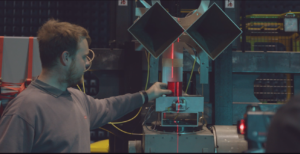

When asked what types of projects the new team will be working on in the Factory of the Future, BAE pointed to one current effort already underway.
“The programme to deliver the next generation combat aircraft, known as Tempest in the UK, is led by our Future Combat Air System (FCAS) Business,” said Foster. “However, FalconWorks will play a key role in helping to demonstrate and de-risk some of the technologies that will support major programmes such as Tempest.”
Flying into the Stratosphere with PHASA-35 and the Future with Tempest
Although much of the focus for FalconWorks appears to be trying to prepare for air combat of the future, the company did note that they already have a few successes under their relatively new belt.
“At last year’s Farnborough Air Show, we unveiled our front fuselage demonstrator, which allowed us to showcase how we designed, developed, and built a representative next-generation front fuselage in rapid timescales that helped build confidence in and prove some of the technologies and manufacturing processes for our Tempest programme,” Foster told The Debrief.
It was a significant milestone and further proof that the idea of rapid prototyping and testing is not just a theory but one the company has already demonstrated on a public stage.
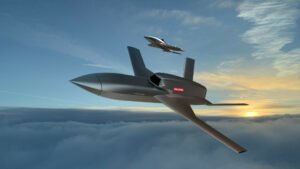

“More recently, we were able to share the progress we’re making, alongside our industry partners, on the combat air demonstrator programme for Tempest, including ejection seat trials, aerodynamic engine testing with Rolls Royce,” Foster told The Debrief. It was also a flight the company described as “the UK’s first flying combat air demonstrator in a generation.”
The Debrief has previously reported on rumors of a Lockheed Martin secret aircraft, including the theoretical capabilities that would qualify a fighter as a sixth-generation platform. However, the exact systems, sensors, and performance details of most such projects, including Tempest, remain highly classified.
Nonetheless, Foster says these latest milestones proved how FalconWorks and BAE Systems are already harnessing new advanced manufacturing processes and their brand new flight simulator that has already allowed pilots to have ‘flown’ hundreds of virtual hours on the demonstrator aircraft.
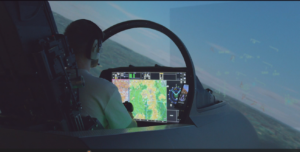

Another recent success is the record-setting, high-altitude June flight of the PHASA-35 aircraft, which was covered by The Debrief. In that effort, the ultra-light, solar-powered, high-altitude PHASA-35 aircraft soared to an altitude of 66,000 feet before coming in for a safe landing.
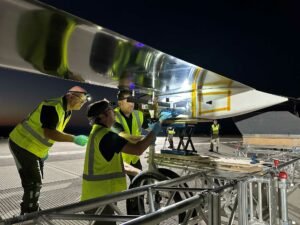

“This is a fantastic achievement for everyone involved and shows the commitment of BAE Systems to invest in new technologies and markets,” said Dave Corfield, CEO of Prismatic, at the time of the test flight. “PHASA-35’s first stratospheric flight demonstrates that this vehicle is on track to become the go-to system for long endurance, high altitude, and communications applications in the future.”
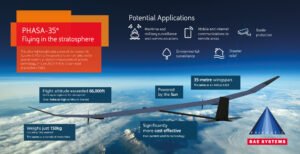

Ultimately, the company is hoping to get PHASA-35 to the point that it can stay in the air for a full year.
FalconWorks Setting its Sights on ‘What Comes After Next’
On its website, the company says they are currently recruiting experts in various technologies to expand the newly developed team beyond its current size. This not only includes adding more FalconWorks staff but experts working with their clients and partners that can contribute to the overall forward-looking goals of the endeavor.
“In addition to our own people, we are deliberately looking to bring the best of the best along with us, partnering with other BAE Systems teams across the Company, academia, a range of small and larger companies, and, of course, our customers to help achieve our goals,” said Foster.
With the FalconWorks effort still in the very early stages, and much of what they are working on likely to remain secret for the foreseeable future, the group nonetheless seems to have wide access to many of the unique personnel and facilities that a 22 billion dollar a year contractor like BAE Systems can provide.
“So, what comes after next?” the narrator of the FalconWorks introduction video asks.
Given the bold goals and “front-footed” vision outlined by Foster and the company at large, it seems that FalconWorks may be building just the right team to find the answer.
Christopher Plain is a Science Fiction and Fantasy novelist and Head Science Writer at The Debrief. Follow and connect with him on X, learn about his books at plainfiction.com, or email him directly at christopher@thedebrief.org.
